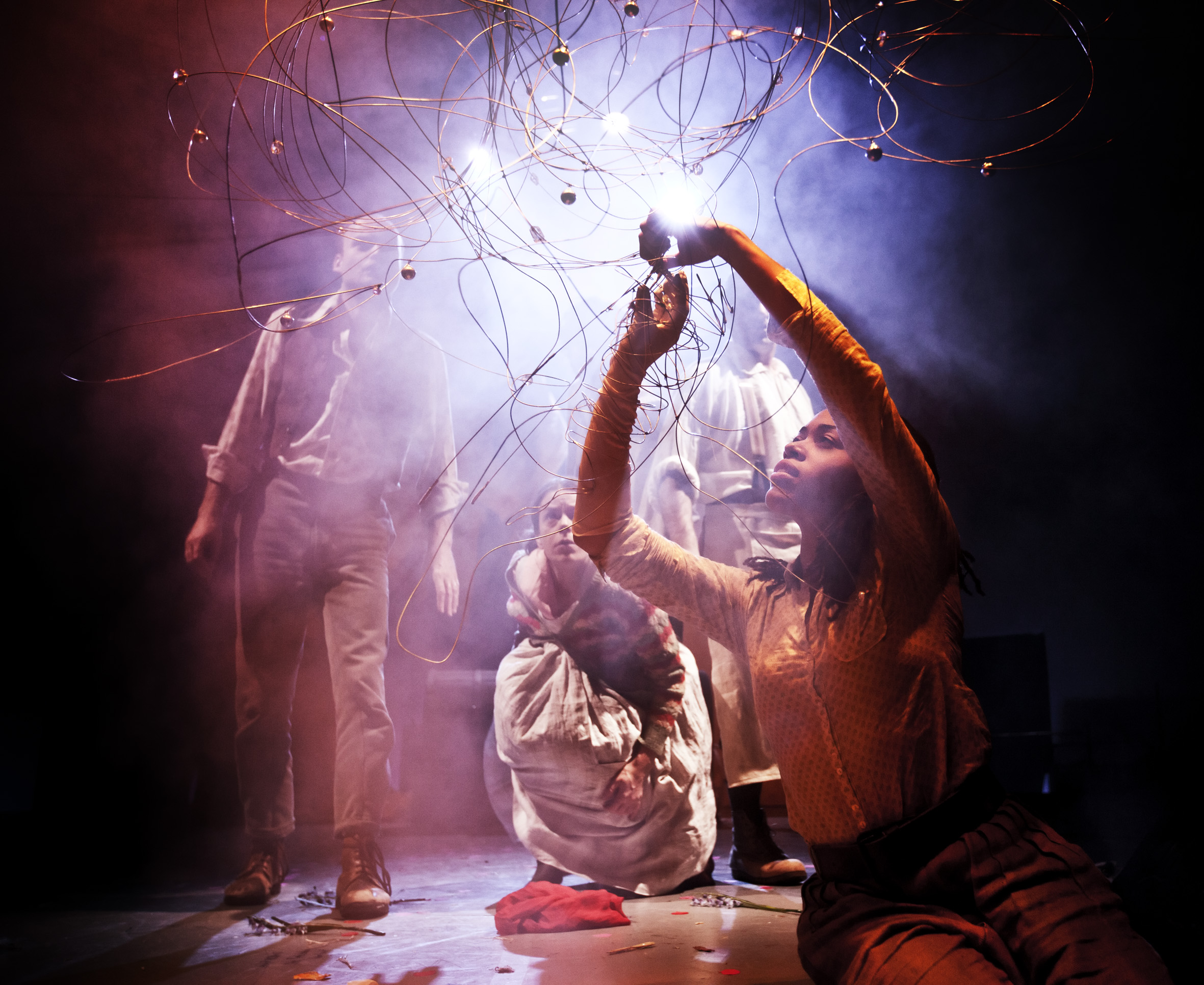Gruesome, humane and vivid, Beasts and Beauties won all-round critical acclaim during its short 2010 season for its retelling of classic fairytales. While a contrast to the classic panto, the stories chosen are familiar (Bluebeard, Beauty and the Beast) and the reimagining is a masterclass in adaptation, which is the result of an A-list collaboration involving the director Melly Still, Tim Supple and the poet laureate Carol Ann Duffy.
Beasts and Beauties was first performed in the National Theatre of Norway in 2002, where Melly created a show based on stories that gave a flavour of Europe. She says: ‘Each country in the mid to late 1800s seemed to have a documenter of stories, like the Grimm brothers, Peter Christian Asbjørnsen and Jørgen Moe from Norway and Hans Christian Andersen, so there were lots of tales to choose from. The Bristol Old Vic asked us to do it again in English and the obvious person to ask to help was Carol Ann Duffy, not to dramatise the stories but, remaining faithful to the original using her unique word smithery, to enhance the natural flavour of each tale.’
The inspiration for transforming the stories for the stage came from Melly’s own love of the genre. She says: ‘When I was a child I loved to watch Tales from Europe which were quite simple animations from Czechoslovakia, Germany and Eastern Europe by and large. They felt very vivid to me. I found them quite scary, especially The Singing Ringing Tree which has since won a cult following.’
Bringing the stories to life on stage involves several stages. Melly explains: ‘The actors started to improvise and tell the story, as if you’re lying in bed and thinking about the story in your head, making the story come alive in 3D. There’s something of everyone involved. When you are dramatising, the guiding rule is to leave out the descriptive stuff because that is delivered visually or physically so you just keep to the events.
‘When we were looking at the beast we looked at the fact it had a speech impediment, he was hideous, and frightening. He’s not human, he’s a beast but he does have something human about him. So we added a sense of things being taking away –a shiny gel gives the impression his skin has been flayed, he was stripped of everything, he was raw and in constant, emotional pain that was manifesting itself physically’
It’s a bit gruesome, I muse. ‘Yes,’ she counters, dryly, ‘it is a bit. But you can grow to love him…’
Melly says she is surprised at the positive reaction to the production but the success may have a lot to do with her sense of responsibility as a storyteller. She says: ‘We don’t embellish the stories, we tell them as they are. These are not tales of morality but are more about psychology – for example, on the surface, Bluebeard could be a story about how being too nosey could end in disaster. But it’s more about how you overcome obstacles. It’s about hope because life’s really tough and there will be lots of obstacles.
‘There is quite a lot of darkness in the tales but that is because they show humans in all their horror, kindness, generosity and jealousy. Everyone has that mixture and we often feel bad about having those feelings because children are discouraged to. These stories help to make these feelings normal, allowing us to vent those uncomfortable feelings we’re not supposed to have.’
She adds: ‘Our guiding message is not to interpret them – it’s not for us to do that it, that’s not our job. It’s up to the individual to interpret them. It’s like a gift.’
It is a gift, as they say, that keeps on giving, as Beasts and Beauties begins a second run this season at the Hampstead Theatre. Melly adds: ‘It is important to try to give young people as much exposure to theatre as possible because it can change lives, especially those who can’t ordinarily afford it.’ This work is sure to inspire a new generation, and Melly is at the forefront of this as a mistress of her craft.
Beasts and Beauties runs from December 1 to January 7 at the Hampstead Theatre in London. The stories are available in a paperback edition from Faber & Faber.
Image by Johan Persson




